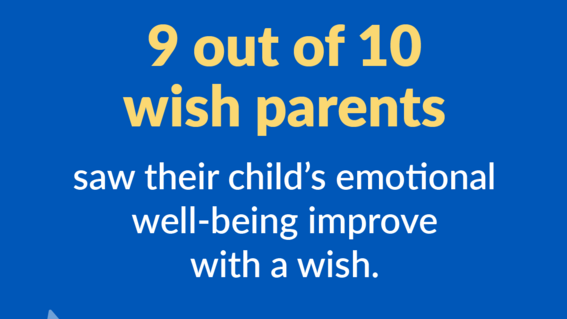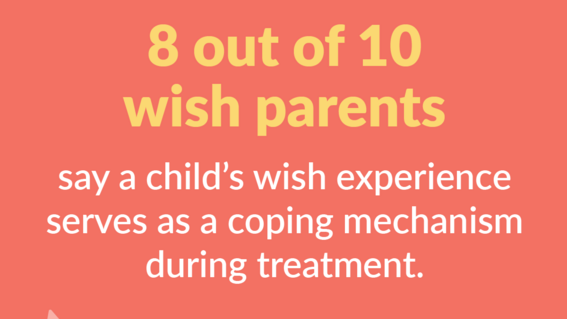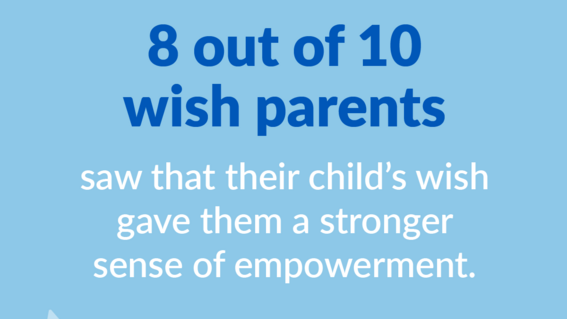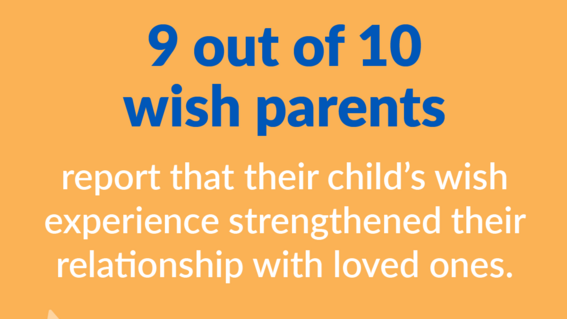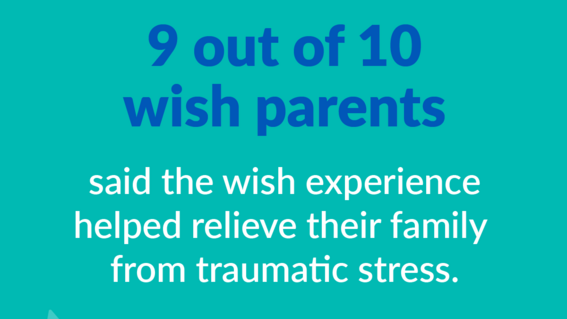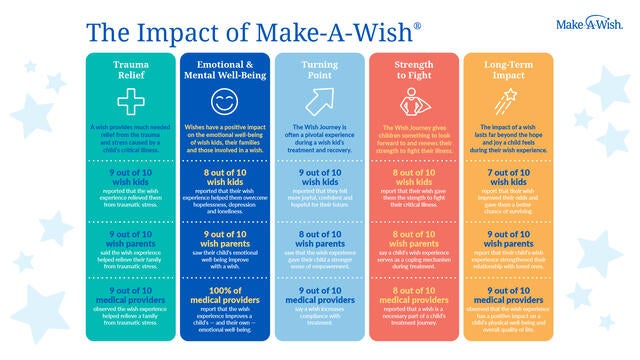
The Impact of Make-A-Wish
In 2010, Make-A-Wish® led a study that defined for the first time the impact of wishes on the children and families that are part of the wish journey. This research provided quantitative measures of the breadth and depth of the impact of the Make-A-Wish mission – previously supported by anecdotal knowledge and assumptions – that wish impact is not limited to the immediate emotional effects on wish children. Rather, Make-A-Wish broadly enhances the quality of life for children and their families by promoting resilience and increasing well-being.
Now in 2022, this research has been expanded to include a much larger population of Make-A-Wish children and parents, in addition to medical professionals. Over a decade later, a large majority of Make-A-Wish alumni, parents, and medical providers overwhelmingly agree that the wish experience contributes substantially to physical, mental, and emotional health; and:
Was a necessary part of the medical treatment journey, improved the odds of survival, provided a support system and better health outcomes, and gave the child a better chance of recovering from their critical illness.
-
Increased hope, strength, joy, confidence, self-esteem, quality of life, and well-being.
-
Served as a coping mechanism and a turning point during treatment.
-
Brought families closer together and strengthened relationships with loved ones.
-
Helped overcome traumatic stress, hopelessness, depression, and loneliness.
